How to Get Perfect Skin from Head to Toe
The body's largest organ is a miraculous piece of machinery—and with our state-of-the-art troubleshooting techniques, it can be truly gorgeous.
By Jenny Bailly
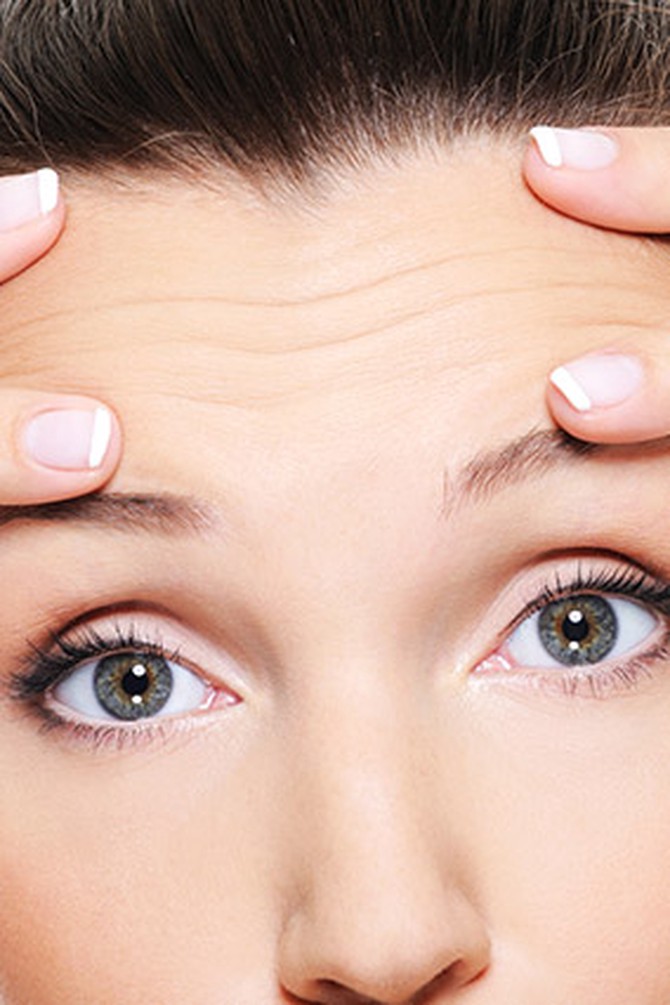
Photo: Thinkstock
Forehead
To soften horizontal lines above the brows and vertical grooves between them, try a retinoid cream, which contains a vitamin A derivative that helps your skin build collagen. With an over-the-counter version (retinol), you see improvement in about three months; prescription formulas (like Retin-A) can minimize lines in six weeks. For a more assertive approach, injections of a botulinum toxin (like Botox, Xeomin, or Dysport) block the nerve impulses that cause muscle activity, softening wrinkles within days, for at least three months. Lines still more noticeable than you'd like? Injections of a hyaluronic acid filler (like Restylane or Juvéderm) can banish them for up to six months.
If you've got discoloration—caused by sun or hormones—the topical bleaching agent hydroquinone can reverse it. (Over-the-counter formulas contain 2 percent; your doctor can prescribe 4 percent.) If the darkness persists after three weeks, a professional glycolic or salicylic acid peel should eradicate it, says Montclair, New Jersey, dermatologist Jeanine Downie, MD.
If you've got discoloration—caused by sun or hormones—the topical bleaching agent hydroquinone can reverse it. (Over-the-counter formulas contain 2 percent; your doctor can prescribe 4 percent.) If the darkness persists after three weeks, a professional glycolic or salicylic acid peel should eradicate it, says Montclair, New Jersey, dermatologist Jeanine Downie, MD.
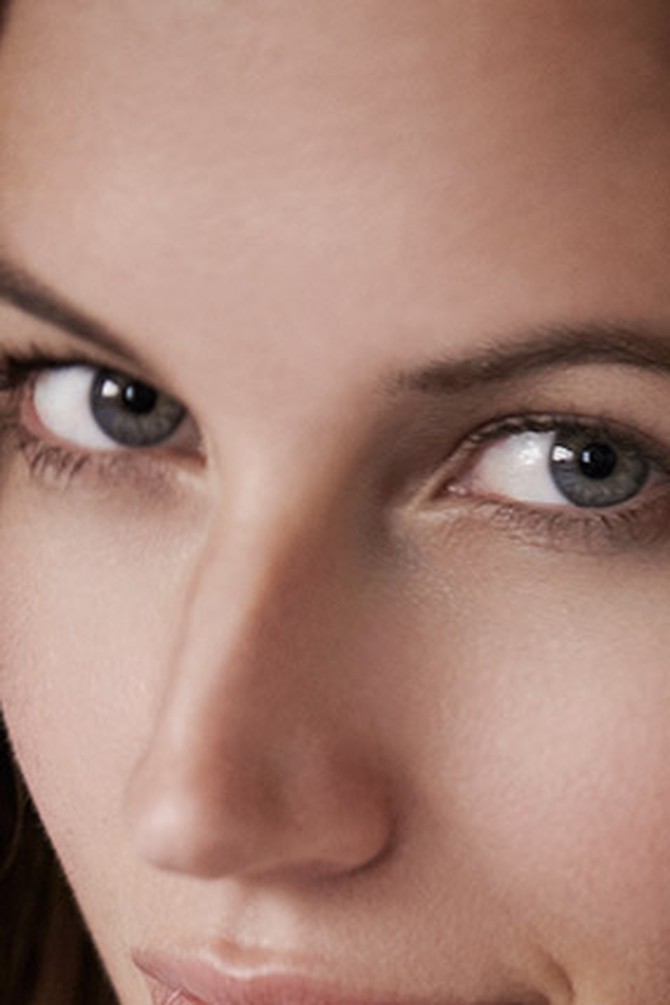
Photo: Diego Uchitel
Eyes
Collagen-building retinoids smooth crow's-feet over several months; so do eye creams with exfoliating alpha hydroxy acids. Botulinum toxin injections soften the lines in a week or less; the effects last for up to four months.
The right treatment for dark circles depends on the cause. If the darkness doesn't disappear when you press on it, the problem is pigment, which can be lightened by a cream with licorice, kojic acid, or soy. Your doctor can prescribe hydroquinone for more dramatic results. If the discoloration is more purple than brown, the shadows are caused by visible veins beneath the skin, which becomes more translucent with age; a retinoid will help by thickening it. For darkness created by undereye hollows, a hyaluronic acid filler plumps the area; many doctors use Belotero, which has a very thin consistency and can be injected smoothly under delicate skin. Results often last a year.
The right treatment for dark circles depends on the cause. If the darkness doesn't disappear when you press on it, the problem is pigment, which can be lightened by a cream with licorice, kojic acid, or soy. Your doctor can prescribe hydroquinone for more dramatic results. If the discoloration is more purple than brown, the shadows are caused by visible veins beneath the skin, which becomes more translucent with age; a retinoid will help by thickening it. For darkness created by undereye hollows, a hyaluronic acid filler plumps the area; many doctors use Belotero, which has a very thin consistency and can be injected smoothly under delicate skin. Results often last a year.
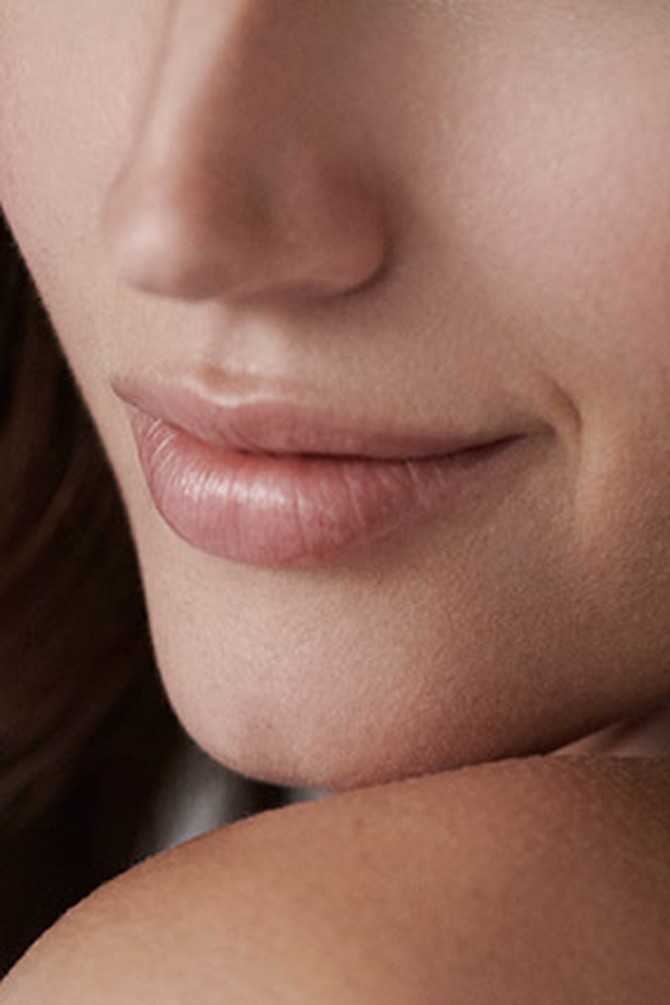
Photo: Diego Uchitel
Lips
Unlike most of our skin, lips are "glabrous," which means they contain no oil glands. Without natural moisture, they're prone to dryness and flakes. Apply generous amounts of a lip balm that contains an occlusive, like petrolatum—or choose pure solid coconut oil, says Beverly Hills dermatologist Ava Shamban, MD, who uses it on her lips every night. Persistent flaking and redness could indicate a product or food allergy; consider an allergy test (common culprits include synthetic fragrances and citrus fruits).
Hyaluronic acid fillers, like Restylane and Juvéderm, plump thin lips for about six months. The same filler can be used to smooth vertical lines around the edges of the lips—or try a silicone-based makeup primer for a pain-free (but far more temporary) fix.
Hyaluronic acid fillers, like Restylane and Juvéderm, plump thin lips for about six months. The same filler can be used to smooth vertical lines around the edges of the lips—or try a silicone-based makeup primer for a pain-free (but far more temporary) fix.
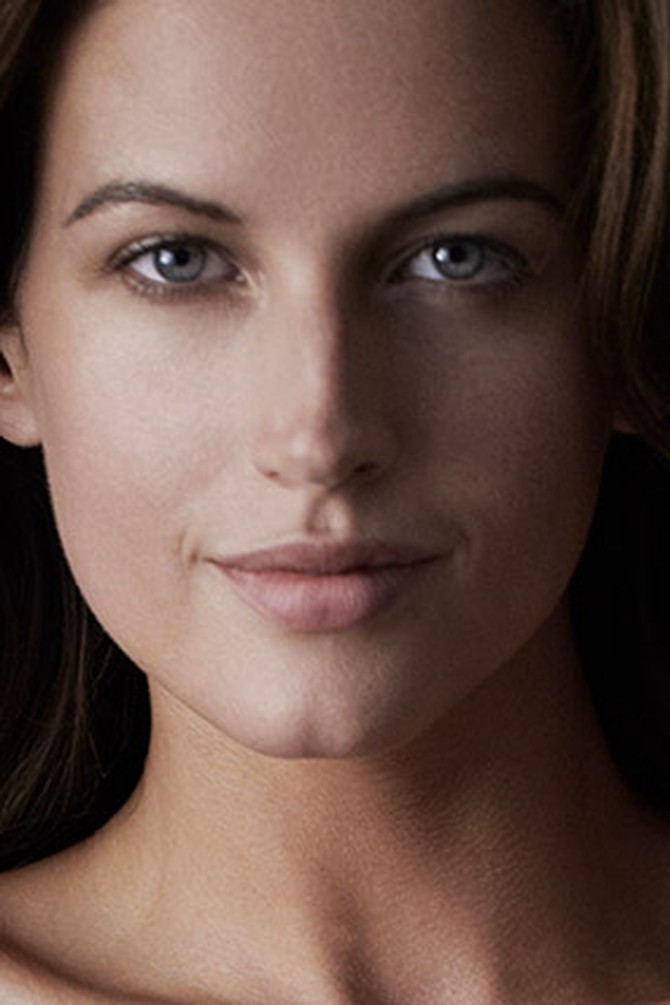
Photo: Diego Uchitel
Cheeks
Diffuse redness is often caused by rosacea, a chronic inflammatory condition sometimes accompanied by itching or burning. Treatments with a pulsed-dye laser or intense pulsed light can mitigate the redness for six months. There's currently no topical treatment for flushing, but doctors have high hopes for brimonidine, a soon-to-be-available topical vasoconstrictor that can reduce flushing for up to 12 hours. When rosy cheeks are accompanied by pimples, a topical antibiotic, like MetroGel, or low-dose oral antibiotics can stop the breakouts. For patches of broken blood vessels, two treatments with a pulsed-dye laser should greatly diminish them; expect to be bruised for several days.
Exfoliators fade dark discoloration by sloughing away the upper layers of the skin; options include retinoids, over-the-counter glycolic lotions and peels, and scrubs that buff away dead skin with tiny beads. The bleaching agent hydroquinone is also effective, but it's usually a better choice for concentrated areas of darkness. For fast and dramatic lightening, a doctor can intensively exfoliate the skin with a series of peels (usually glycolic acid) or several laser treatments (like the Fraxel Restore or the Palomar Emerge). Discrete dark spots can be erased with a Q-switched laser; you'll see some scabbing but be back to normal within a week.
As your skin and the soft tissue beneath it lose elasticity, your cheeks begin sagging. A thick hyaluronic acid filler, like Perlane or Voluma, can be injected over the cheekbones for some lift. A welcome side effect: When your cheeks are lifted, your nasolabial folds (the lines that run from your nose to the corners of your mouth) become less pronounced, says New York City plastic surgeon Andrew Jacono, MD.
Exfoliators fade dark discoloration by sloughing away the upper layers of the skin; options include retinoids, over-the-counter glycolic lotions and peels, and scrubs that buff away dead skin with tiny beads. The bleaching agent hydroquinone is also effective, but it's usually a better choice for concentrated areas of darkness. For fast and dramatic lightening, a doctor can intensively exfoliate the skin with a series of peels (usually glycolic acid) or several laser treatments (like the Fraxel Restore or the Palomar Emerge). Discrete dark spots can be erased with a Q-switched laser; you'll see some scabbing but be back to normal within a week.
As your skin and the soft tissue beneath it lose elasticity, your cheeks begin sagging. A thick hyaluronic acid filler, like Perlane or Voluma, can be injected over the cheekbones for some lift. A welcome side effect: When your cheeks are lifted, your nasolabial folds (the lines that run from your nose to the corners of your mouth) become less pronounced, says New York City plastic surgeon Andrew Jacono, MD.
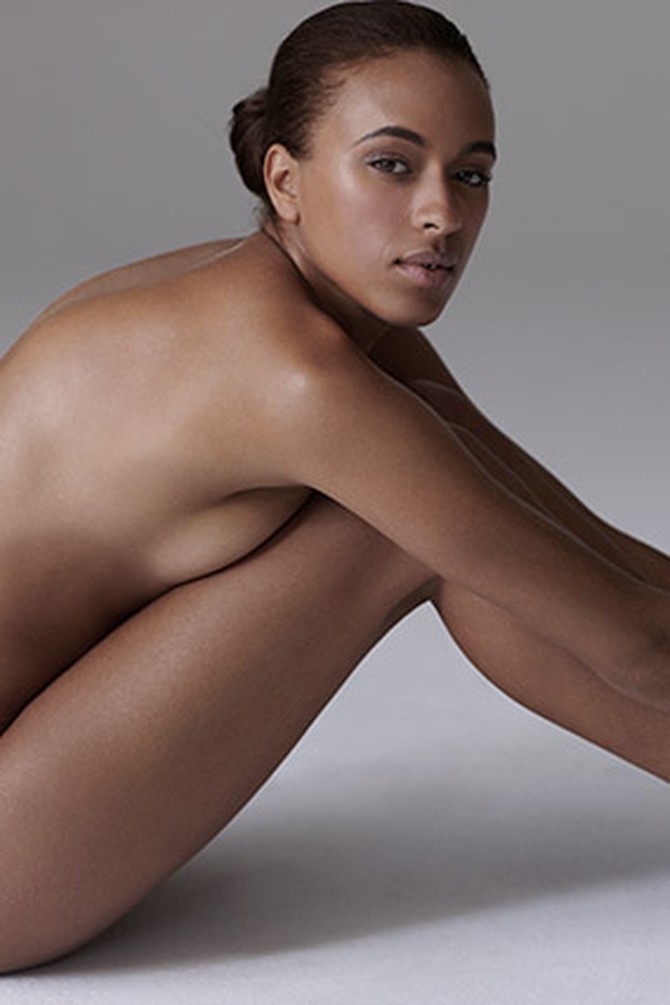
Photo: Diego Uchitel
Neck and Décolleté
To reverse both crepiness and dark spots, apply retinoids or alpha hydroxy acids; they build collagen (to improve texture) and exfoliate (to fade discoloration). If you use a prescription retinoid, apply it sparingly; two pea-size drops for the whole area is enough. This skin has fewer oil glands than the skin on the face and can be more prone to irritation. To dramatically improve the appearance of your delicate décolletage, doctors use a fractionated nonablative laser (like the Fraxel Dual or the Restore). "Two to four treatments erase fine lines and make dark spots disappear," says New York City dermatologist Whitney Bowe, MD.
If you have deep vertical lines between your breasts, they can be smoothed with a hyaluronic acid filler. Botulinum toxin injections soften prominent vertical cords on the neck; results last about four months.
If you have deep vertical lines between your breasts, they can be smoothed with a hyaluronic acid filler. Botulinum toxin injections soften prominent vertical cords on the neck; results last about four months.

Photo: Diego Uchitel
Stomach
Fluctuating weight (especially during and after pregnancy) can leave loose skin on your midriff. Thermage, which uses radiofrequency energy to heat the skin and build collagen, helps restore elasticity. Two sessions should improve minor laxity and crepiness.
Though stretch marks can't be prevented, frequent moisturizing may make them less prominent. When they do appear, your best bet is to address them when they are red or purple. A couple of sessions with a pulsed-dye laser will remove the redness. The marks will still turn smooth and white, but if they're treated early, they'll be less obvious. For older marks, you can lightly even out the texture with a topical retinoid. For a more intensive treatment, opt for a few sessions with a fractionated nonablative laser, which can diminish white stretch marks by about 50 percent, says New York City dermatologist Julie Karen, MD.
Though stretch marks can't be prevented, frequent moisturizing may make them less prominent. When they do appear, your best bet is to address them when they are red or purple. A couple of sessions with a pulsed-dye laser will remove the redness. The marks will still turn smooth and white, but if they're treated early, they'll be less obvious. For older marks, you can lightly even out the texture with a topical retinoid. For a more intensive treatment, opt for a few sessions with a fractionated nonablative laser, which can diminish white stretch marks by about 50 percent, says New York City dermatologist Julie Karen, MD.
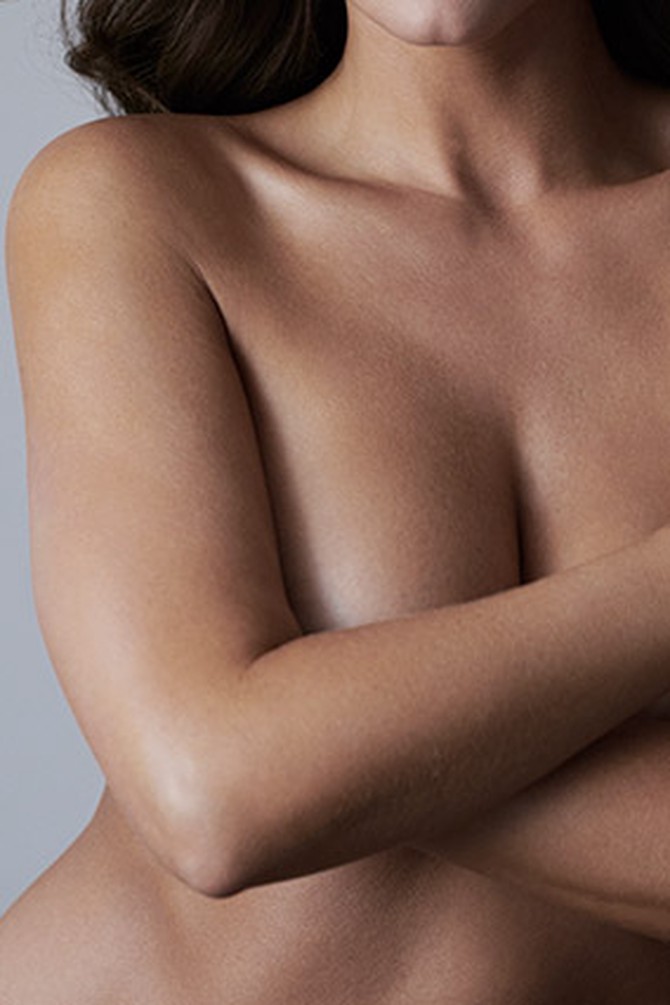
Photo: Diego Uchitel
Arms
Tiny, stubborn bumps on the backs of your upper arms are likely caused by keratosis pilaris, a condition in which keratin (a protein in the skin) forms hard plugs within hair follicles. Daily use of an over-the-counter glycolic or lactic acid lotion should clear it up in a few weeks; avoid scrubs, which can cause further inflammation. A 1 percent hydrocortisone cream may reduce any accompanying redness.
To eliminate discoloration on the arms, many doctors use photodynamic therapy (PDT), which treats both the aesthetic issue and the precancerous lesions that can appear in this area. The arms are painted with a photosensitizing chemical that's activated with light, leaving the skin red, swollen, and a little sore for up to four days. After a week, it's brighter and much more even-toned; one or two sessions usually suffice. To address both discoloration and crepiness, a fractionated nonablative laser is a popular choice; three to five treatments do the trick.
To eliminate discoloration on the arms, many doctors use photodynamic therapy (PDT), which treats both the aesthetic issue and the precancerous lesions that can appear in this area. The arms are painted with a photosensitizing chemical that's activated with light, leaving the skin red, swollen, and a little sore for up to four days. After a week, it's brighter and much more even-toned; one or two sessions usually suffice. To address both discoloration and crepiness, a fractionated nonablative laser is a popular choice; three to five treatments do the trick.
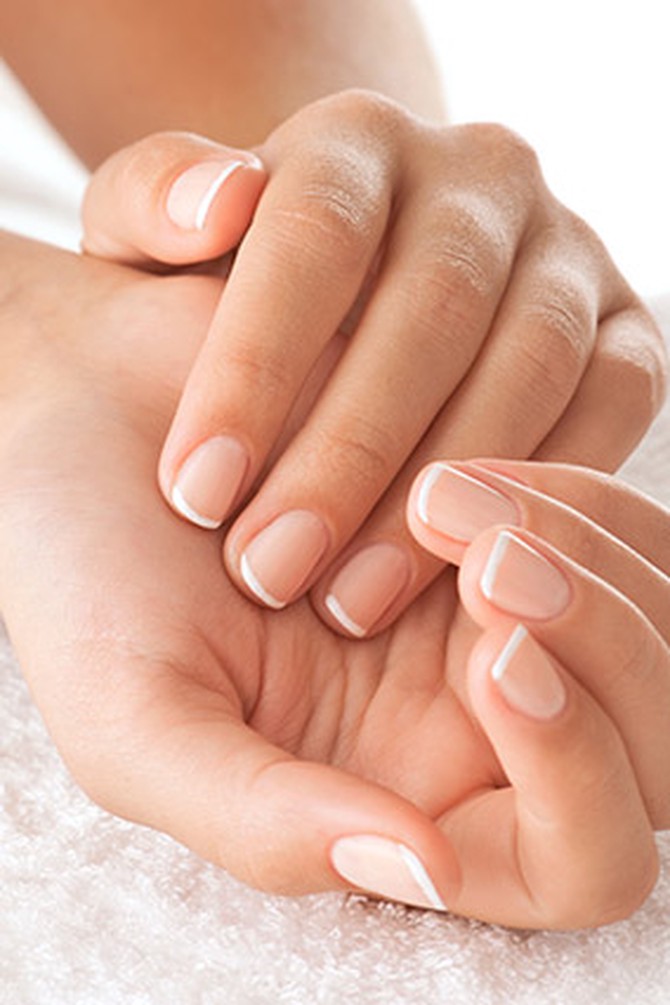
Photo: Thinkstock
Hands
Your hands age just like the rest of you; if you're not already, start slathering them with sunscreen. A topical retinoid will help fade the dark spots that often speckle this constantly sun-exposed area, and will also minimize tendons and veins, which become more prominent as skin thins with age. Injections of a hyaluronic acid filler can instantly and dramatically plump the hands for up to a year; if veins are still visible, consider sclerotherapy (which involves injections of a detergent solution—not as scary as it may sound), to help shrink them. For fast dark spot removal, doctors use the Q-switched laser: "You leave the office with small scabs; about a week later, your hands look 15 years younger," says Karen. Fractionated nonablative lasers offer a one-two punch, minimizing discoloration and surface crepiness.
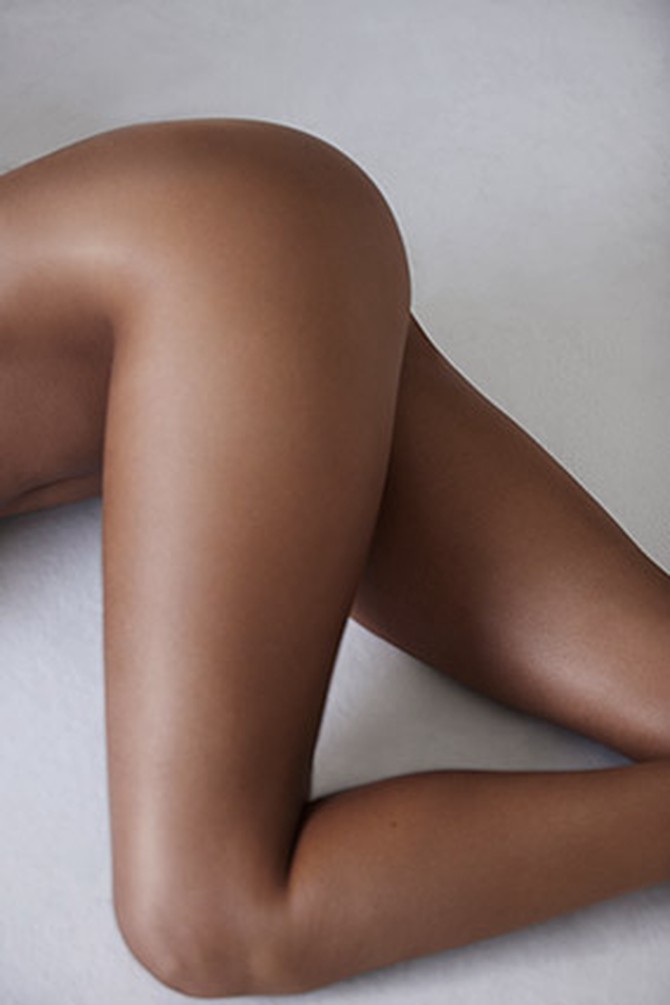
Photo: Diego Uchitel
Butt and Thighs
Genetics, hormones, and inflammation conspire to stiffen the fibrous tissue that runs through this area; the fat then ripples and puckers, making the skin look dimpled. In other words: You get cellulite. The creams and lotions that claim to treat it might slightly diminish the puckering for a few hours. Maybe. None has significant, long-term impact. Some dermatologists perform treatments that use suction and/or laser, light, or radiofrequency energy (brand names include SmoothShapes and VelaShape), which can effect some change by thickening the skin and redistributing the pockets of fat. But they don't eliminate the problem and must be repeated frequently. Your best options: an alpha hydroxy lotion to remove the dry skin that makes cellulite look worse, and a self-tanner to make it less noticeable.
Next: 5 superstar facial cleansers
Next: 5 superstar facial cleansers

Photo: Thinkstock
Feet
The ticket to reversing roughness and scales: "Repetitive, consistent moisturizing," says Boston podiatrist Carolyn Siegal, DPM. But not with scented, silky lotions. Use a petrolatum-based ointment or rich shea butter cream every night, then slip on cotton socks. If your feet are cracked or flaky, alternate the thick cream with an exfoliating alpha hydroxy lotion (but skip the socks). A pumice stone or foot file (best used on damp skin) is also effective, but avoid anything that resembles a cheese grater, which can wound the skin. If dryness and cracking persist or are accompanied by itching, you may need a prescription-strength exfoliator, steroid, or antifungal.
Published 10/15/2013

